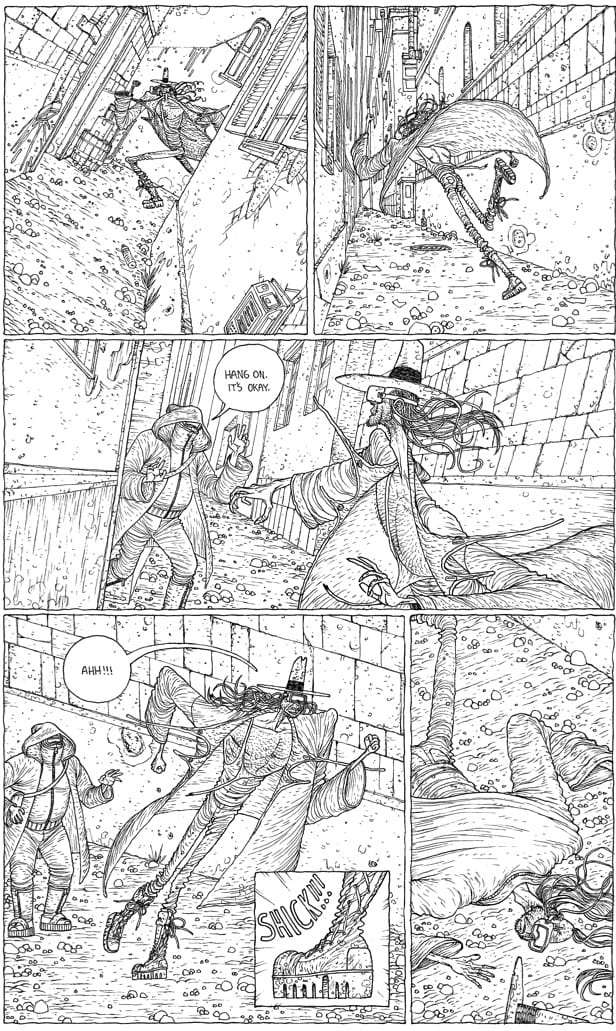There was an odd digression in a recent article about an artificial-intelligence algorithm generating images to stimulate the part of a monkey’s brain used to recognise faces. “Visual neurons, it seems, like exaggeration,” it read. “In previous studies, [the scientist’s] team showed that face-selective cells will respond more strongly to caricatures than to actual faces.”
Comics are brimming with caricatured faces, of course. Beady eyes, slits for mouths, upside-down 7s for noses. We have no problem responding to them as human, even though their proportions are often strained, distorted, or monstrous. What makes one of these faces ugly – Bernie Wrightson’s monster from Frankenstein, Frank Miller’s Marv from Sin City – and what’s just business-as-usual comic book exaggeration?
The hero of Matt Lesniewski’s graphic novel The Freak has an asymmetrical head: a wide chin, a pointed skull, a thin knot of hair on top. “To many,” the narration goes, “he’s the ugliest man to have walked the planet.” His story begins as he decides to travel to an unnamed city to see if he’ll be treated differently, but immediately he’s surrounded by a crowd, shrieking: “Oh my – that man is revolting!” and “His mere presence decreases the value of this great city” and “I can’t stand the sight of someone so disgusting!” He’s beaten almost to death and his shovel is stolen. It’s his only possession, used for his grave-digging, and he’s determined to get it back.
It seems as though it’ll be yet another revenge story, but soon zags when you thought it would zig; it digs into the question of the Freak’s capacity for forgiveness. (Not before someone’s decapitated, don’t worry.) The book’s a slim volume – 80 pages split into three chapters – and it reads like a parable, although it's a parable with a meaning that is left intentionally obtuse. Lesniewski is more interested in the beginnings of stories than their endings, and The Freak plants several narrative possibilities before abruptly harvesting them.
The art here’s exquisite. The black-and-white linework fills every panel with details like a spider with its web, but the action’s never confused or chaotic. The city is filthy and sprawling, always dwarfing even the Freak, and every face it contains feels unique. The narration boxes are just more bricks in the city’s walls, weighing everything down with their proclamations. (There are a couple of mistakes, too, at least in the copy I read.) My first thought as I finished The Freak was: man, that story was so dirty but it read so clean.
 The question remains: is the Freak really so ugly? Even in close-up, with one eye streaming tears and the other swollen beyond recognition, is his face really so much worse than a dozen other comic book faces? As the Freak encounters others like himself, they look even less shocking. Perhaps Lesniewski just has such affection for his characters that he can’t bear to make them truly hideous; perhaps the part of my brain that recognizes faces knows there’s not much difference between you, me, and the Freak.
The question remains: is the Freak really so ugly? Even in close-up, with one eye streaming tears and the other swollen beyond recognition, is his face really so much worse than a dozen other comic book faces? As the Freak encounters others like himself, they look even less shocking. Perhaps Lesniewski just has such affection for his characters that he can’t bear to make them truly hideous; perhaps the part of my brain that recognizes faces knows there’s not much difference between you, me, and the Freak.








